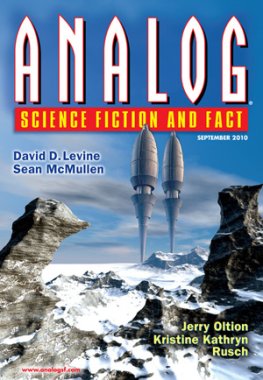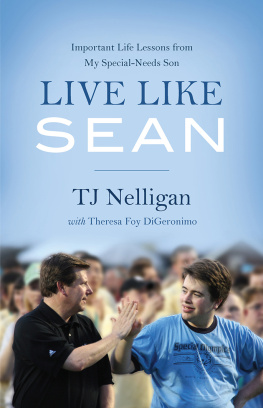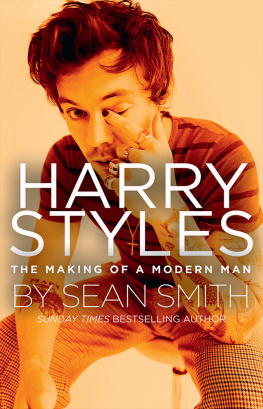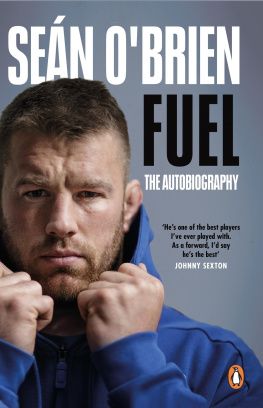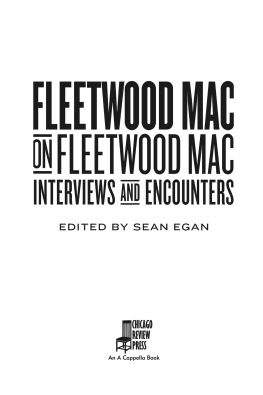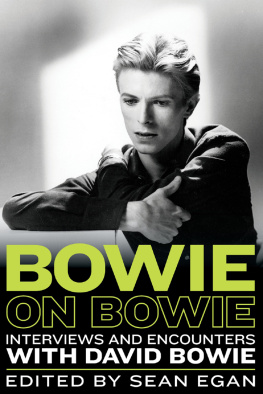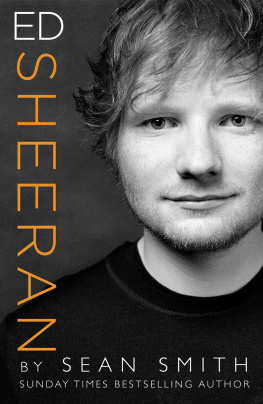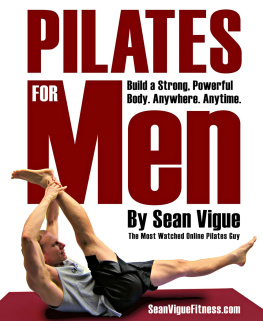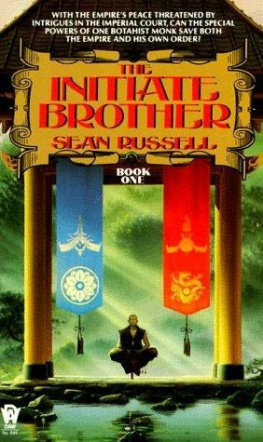SEN S is a renowned Irish traditional singer and former primary school teacher. He has performed all over the world and is particularly well known for his recording of An Poc ar Buile and for his collaboration with Sen Riada. Born in Ballylickey near Bantry in County Cork, he lived most of his life in Cork city, where he still resides today.
PATRICIA AHERN is the co-author of The Loneliest Boy in the World, The Lightkeeper and In Search of the Missing. Born in Mallow, she now lives in Ballinhassig, County Cork.
This book is dedicated to
Eileen, ine and de, Con and Caitrona, Mabh, Sen and Ciara.
Ar scth a chile a mhaireann na daoine
People live in each others shelter
(Irish proverb)
Sen S: The Voice of the People
na agus an Seanadir Labhrs Murch
T he story of Sen S, the singer and raconteur, spans over a half century. During this time Ireland experienced many changes which saw the fledgling state transformed into a confident and progressive entity, having taken its place among the nations of the world. Our cultural identity, though challenged and at times eroded, remained intact. Then a new generation of young Irelanders took on the task of redeeming and enhancing our cultural treasures. Sen S played a pivotal role in this cultural renaissance.
As a proud son of Munster and a dedicated teacher, the young Cork Gael set himself firmly on the journey of Davis, Pearse and Riada. His singing full of feeling, passion, reverence and, yes, patriotism carried with it an echo of the noble and Gaelic Ireland, full of promise and creativity.
Sen S traversed and explored the Irish psyche, ever conscious of our history of survival and determination to sustain those characteristics which set us apart as a significant and ancient nation. Sen drew sustenance from the well of tradition which was to be found in the Gaeltacht or wherever the Gaeil foregathered in celebration of who we are as a people.
His songs spoke of valiant deeds and noble aspirations. When delivered by the master, which was Sen S, these songs inspired young and old with a sense of national pride and tenacity of character. Whether on a stage in an Irish rural setting or on a world stage, Sen spoke to the hearts which yearned for a voice to tell their story and claim their cultural inheritance. This he did with a sense of duty and privilege and in a manner that left an abiding message which lingered well into the future. He sowed the seed for others to harvest.
Sen S never forgot his roots. He is truly a man of the people, sharing their joys and sorrows, whether they were hurlers playing the sliothar on the green sod of Ireland; or craftsmen, musicians, poets, and those who stood their ground for human rights and values.
People will celebrate Sens outstanding talents as a performer and reflect on his generosity in sharing those talents with so many at home and abroad. Br Bor and Comhaltas Ceoltir ireann can attest to this generosity he has travelled with us and cheered us on many a fruitful journey. He lifted our spirits and helped us raise the flag to the top of the mast.
Sen Ss cultural journey has brought him from Cork to Cuba; from Cashel to China; from Armagh to America; from Mayo to Moscow; and so many other destinations in between. He crafted enduring designs and colours in a comforting tapestry which embraced all men and women of goodwill who shared their dreams and achievements in a fraternal global celebration. Yes, he is a singer par excellence but he is also a leader, an ambassador and one who is a beacon in the choppy and turbulent seas of change. His message and his talents have stood the test of time and are still vibrant and relevant to this very day.
With heartfelt pride, affection and appreciation we salute this man who has raised a pedestal for others to occupy. It has been a wonderful experience as we travelled together, carried on high by an all embracing patriotism, adding to the story of Ireland in all her splendid grandeur. Sen, n dhanfar dearmad riamh ort an fhaid is a bheidh Gael fgtha in irinn.
Do sheas t an fd linn, a Shein. Do thug t misneach agus brd dinn. Do spreag t sinn in am an ghthair. Do shiil t linn ar an rd a bh romhainn. T cl agus cil tuillte go maith agat. Gura fada buan t.
S hortly after singing for President de Valera, Pdraig Tyers, who managed the Cork office of Gael Linn, suggested that I should send a demo tape to the Gael Linn headquarters in Dublin, with a view to making a record. Immediately, I thought of the song I had heard Dnal Mullin sing all those years ago in Coliste osagin, An Poc ar Buile.
As it happened, the harpist and singer Deirdre N Fhloinn was living in Cork at the time. She was a most generous and helpful person and with her help we made a demo tape of An Poc ar Buile.
Gael Linn always did great work in recording Irish traditional singers and I hoped against hope that they might include me among their recording artists. The man with the power to decide this was the deputy director of Gael Linn, Roiberd MacGabhrin, whom I knew through the Gael Linn Cabaret. After sending off the demo, word quickly came back that Roiberd was indeed in favour of recording An Poc ar Buile.
On the following Saturday, Roiberd invited me along to his home in Stillorgan in Dublin to audition for Sen Riada, to see if he would have any interest in producing the proposed record. By then, Sen Riada was famous as the composer of the music for Mise ire, the documentary film by George Morrison about the 1916 Rising and the founding of the Republic of Ireland.
Shortly after I landed at Roiberds house, a big, green Jaguar pulled up outside. Sen Riada stepped out, with his hair tossing in the wind, smoke rising from a big cigar and a gabardine raincoat tightly belted around his waist. Roiberd led him inside and introduced him to me. While I was delighted and excited to meet him, I was extremely nervous about auditioning for such a great composer and musician.
The audition went well and so began my singing career in earnest.
W hen I was a child, I was very shy and felt out of the loop with other boys, maybe because both my parents were teachers in the school I attended. Yet, in later years, when it came to belting out a verse of a song, my shyness never held me back. Instead, it spurred me on to sing, as it was only when I sang that I really came out of myself.
But it was natural that I should sing, as singing was in my blood, going way back through the generations. My grandfather Con OShea was known for his love of singing. Originally from Kerry, he was born at the top of Glanmore Lake, at the foot of the famous Tim Healy Pass, in 1845 at the time of the Famine. Later in life, he crossed over the Pass from Glanmore and settled on the Beara Peninsula in Adrigole, on the southwest coast of Ireland. In time, he bought a small farm there. He met and married Catherine OSullivan from Trafrask, a neighbouring townland. Together they had nine children, four boys and five girls. As well as farming the land and mending shoes he was a cobbler he carred butter in his pony and trap to the butter market in Cork city for neighbouring farmers who buried firkins of butter in a bog until there was a load of them ready for my grandfather to take to Cork. In its day, that market situated in the shadow of Shandon Steeple and known as the Firkin Crane was the largest butter market in the world and so important that it set the price of butter all over Europe.










